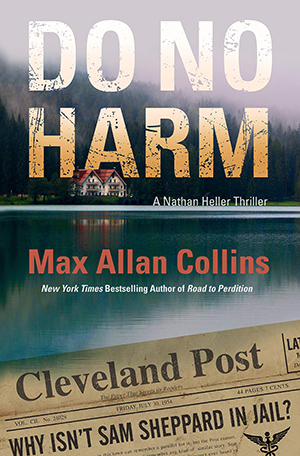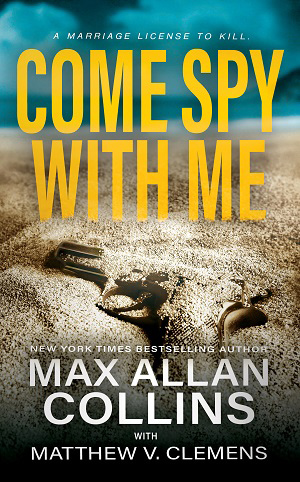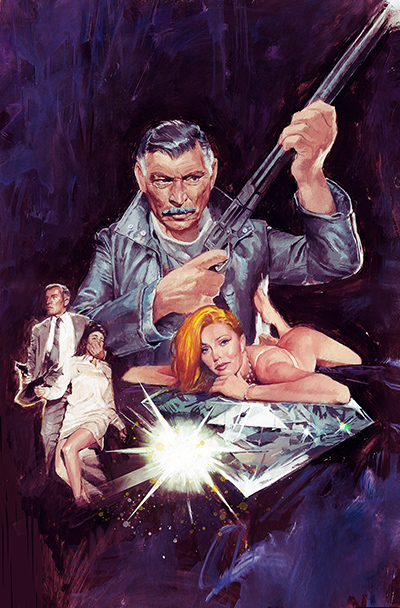Amazon has a bunch of my stuff on sale all through the month of December, starting with the entire Reeder and Rogers series ([Linking to Amazon: –Nate] Supreme Justice, Fate of the Union, Executive Order) in an offer that will be sent to select customers.
Everybody else gets an even better deal – all of the following are at .99-cents during December:
The Titanic Murders
The Hindenburg Murders
The Lusitania Murders
The Pearl Harbor Murders
The London Blitz Murders
The War of the Worlds Murder
What Doesn’t Kill Her
Midnight Haul
Girl Most Likely
This is the first time The Girl Most Likely has been offered at the .99-cent price. And Girl Can’t Help It is available for $1.99.
Just till the end of the month.
At the Rap Sheet, that stellar critic and pop culture expert J. Kingston Pierce has selected Do No Harm as one of his favorite crime-fiction books of the year. Normally I would just provide a link, but I want to brag a little:
In previous books, Chicago private eye Nate Heller reinvestigated some of the 20th century’s most notorious crimes, from the “presumed” murder of bank robber John Dillinger to the slaying of L.A.’s enigmatic “Black Dahlia.” So it’s no surprise that he should finally tackle the real-life case of Cleveland osteopath Sam Sheppard, charged with bludgeoning his wife to death in July 1954. As on television’s The Fugitive—supposedly inspired by this case—the accused here claimed innocence, insisting an intruder had offed his spouse. And in Do No Harm, Perry Mason creator Erle Stanley Gardner believes Sheppard … which is why he hires Heller to review the evidence, three years later. In so doing, Heller walks readers back through the bizarre, haunting circumstances of that homicide and its aftermath, raising doubts not only about Sheppard’s guilt but about the actions of authorities (and newspapers) that helped to promptly convict him. In addition to Gardner, “Untouchable” Eliot Ness and celebrity attorney F. Lee Bailey guest star in this inventive 17th Heller novel, one of the series’ finest entries—and that’s saying a hell of a lot.

Kevin Burton Smith of the great Thrilling Detective web site selected Do No Harm as one of his favorite crime fiction novels of the year, and listed it (also at the Rap Sheet) but did not write about it. But I’m pleased just the same.
I should remind regular readers here that Do No Harm apparently will not get either a trade paperback or mass market reprint. So you’ll need to pick up the hardcover, which will likely go out of print (other than e-book) before too long.
Continuing to brag, I will share Ron Fortier’s wonderful review of Come Spy With Me at Pulp Fiction Reviews:
Max Allan Collins with Matthew V. Clemens
Max Collins is one of those writers who is constantly surprising us. After decades of offering up great mystery and crime tales, he then had us cheering wildly for his western actioners courtesy of the late Mickey Spillane’s cowboy hero, Caleb York. Now comes super-spy James Bond’s clone, John Sand.
The setting is the early 60s and a British novelist has become famous by fictionalizing the exploits of M1-6’s operative, John Sand. Obviously with such notoriety, Sand’s effectiveness as an agent is compromised and as the story opens, he has retired and married the beautiful Stacey Boldt, the beautiful heiress to a Texas oil tycoon. If that sounds familiar, think George Lazenby and Diana Riggs, we certainly did. It is wish fulfillment ala what might have happened had she survived. This book takes us there and it’s a wonderful ride.
Sand is sincere in his desire to leave his dangerous career behind and pursue his new role as an executive in his wife’s business empire. This all goes awry when, while on a trip to Caribbean, he becomes entangled in a political assassination. Within days he’s summoned by President John F. Kennedy to a clandestine meeting in the desert of Utah where a Frank Sinatra western is being filmed. Kennedy suspects rogue agents of the C.I.A. are planning on assassinating Fidel Castro. After the disastrous failure of the Bay of Pigs, the last thing he wants is another embarrassing incident pointing back to the U.S. Reluctantly Sand agrees to go to Cuba and see if there is any validity to the President’s claims.
As always, Collins’ use of the time and culture are spot on and add so much to the rich texture of his narrative. Ultimately Sand uncovers an even greater threat and upon reporting to Kennedy, is once again manipulated into being the President’s personal secret agent. If that wasn’t enough of a headache, Stacey demands to tag along. If her husband is going to continue leading a double-life, then he is going to do it with her or else he can pack his bags and kiss their marriage sayonara.
If like us, you grew up reading Ian Fleming’s James Bond adventures, Come Spy With Me will feel like old home week. Not a bad way to kick off a new series, Mr. Collins & Clemens. Not bad at all.

Indiewire has a selection of books that its reviewers think should be TV series – and Nate Heller is on the list! Check this out….
This is Skyboat media hawking its own audio releases of Murder, My Love and Masquerade for Murder. But it’s a very nice job and you may get a kick out of it.
Once again, Supreme Justice has made a list of the best legal thrillers of all time.
Here’s The Consummata by Mickey Spillane and me at a bargain price (check out this entire website, for cool stuff.)
Ms. Tree: Skeleton in the Closet gets a recommendation from Tony Isabella, whose blog is always fun and informative.
M.A.C.

